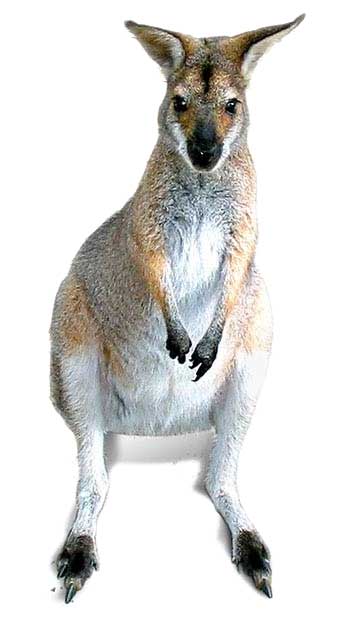Red Neck Wallaby
You guessed it! Red Necked Wallabies have reddish fur on their shoulders and the nape of their neck.
Red-Necked Wallabies
Macropus rufogriseus
Other common names for this wallaby are Bennett’s Wallaby, Brush Wallaby, Brusher and Red Wallaby. Red-necked Wallabies act solitary throughout resting periods but graze communally.
They are found down the east coast of Australia ranging from Southern Queensland through NSW and Victoria and throughout most of Tasmania.
Their habitats include scrubland to open forest with heath land to hide in amongst.
There are two subspecies of Red-necked Wallaby, a mainland and a Tasmanian subspecies. They are of great interest to studies due to their distinct differences. For example their different breeding cycles. On the mainland females give birth to young throughout the year however in Tasmania females give birth from mid summer to mid winter. Another difference between the subspecies is their fur. Tasmanian Red-necked wallabies have longer, denser fur to cope with the cooler temperature.
Law in all states of Australia protect this species but licenses can be obtained to cull numbers if they are proven to be pests in croplands or pastures.
They can be distinguished from other wallabies by their large size and distinctive colouring. The majority of their body is brown/grey with a reddish/orange neck sometimes extending down their backs. Males tend to have a deeper or more distinctive ‘red neck’ than the females who are duller in colour. Their chests are usually white or lighter in colour and their paws, muzzle and majority of feet are always black.
At AWWP our Red-necked Wallabies enjoy resting under trees or other shady areas near our visitor centre during the warmest part of the day becoming more active during late afternoon and early morning.

